Measuring Pisco in Peru
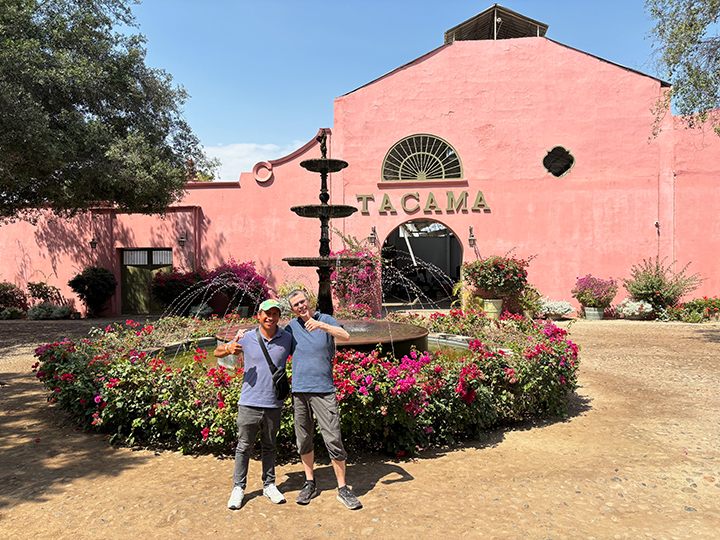
Exploring Pisco at Tacama Winery
We can find fermented beverages all over the world, a long tradition since thousands of years. Well known is of course wine and beer. We also distill and get Vodka out of potato, Grappa out of grape skin and Cognac out of grapes. Main difference being raw material, the distillation equipment and aging process.
Pisco from Peru was unknown to me before, but I soon found out the similarities when visiting the Tacama Winery...
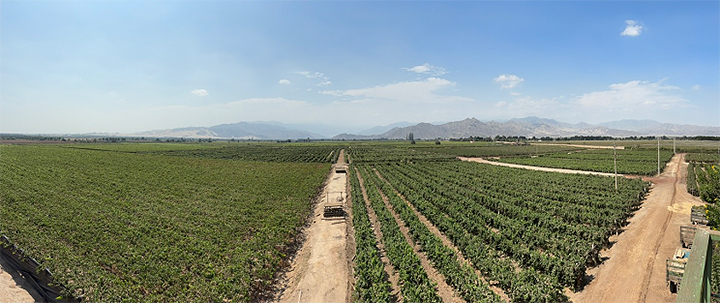
The Vineyard of Tacama Winery, Ica, Peru
The History
South America and Peru is no exception when it comes to having a tradition of fermented products. The Inka Indians drank a fermented corn beverage, long before the arrival of the Spanish conquistadores. This changed slowly with the arrival of European beer and wine. Wine was needed for the communion service in the catholic church, but also something the conquistadores wanted to drink. Peru and the oasis of Ica was found ideal for cultivating grapevines. A dry area but with a reliable supply of water from the Andes. Suitable also due to the closeness of many enriched conquistadores. Tacama Winery was founded 1540 in this region and is now claimed to be the oldest winery in South America. At first, they only produced wine but over the years they explored methods to distill their local wine. They discovered that the warm climate of Peru provided excellent conditions for growing grapes with high sugar content, and therefore high alcohol levels when distilling. A spirit called Pisco was created, a different spirit compared to Cognac, Armagnac and Grappa.
I just had to find out the difference. How is Pisco made, how does it taste and how does a winery look like after almost 500 years in operation?
Pisco, or Pisco?
At Tacama I found that to you need to follow many rules before you are allowed to call your spirit Pisco from Peru. There are actually two types of Piscos, one made in Peru and one made in Chile. Tacama make their Pisco according to the Peruvian rules which means a certain alcohol level, only one distillation in a copper pot still, no water can be added and never aged with wood. Since no aging is allowed you get a distillate that is colorless. You are only allowed to use grapes from a selection of eight Peruvian grapes. Tacama uses five grapes and store their Pisco in stainless steel tanks.
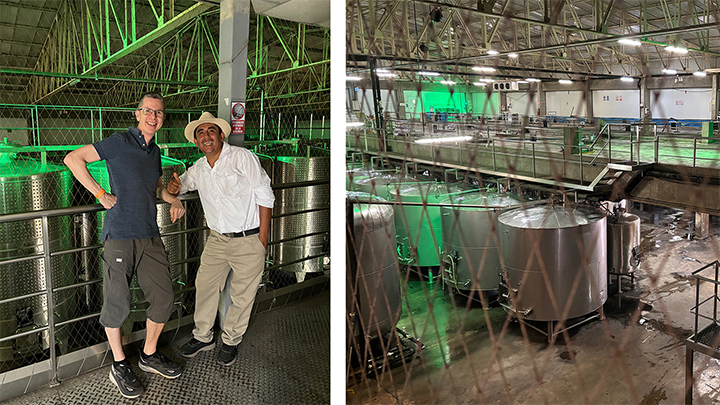
Tacama Winery and Distillery
Differences
I found out that Cognac and Armagnac in France are also based on grapes and follow a similar production process. However, they use different grapes, and they are aged in wooden casks. The Italian Grappa has also similarities with Pisco, but Grappa is made of grape skin. After tasting I could conclude that the taste of Cognac, Grappa, and Pisco is not similar at all. Quite amazing that so small variations in grapes and aging can give so different Spirits!
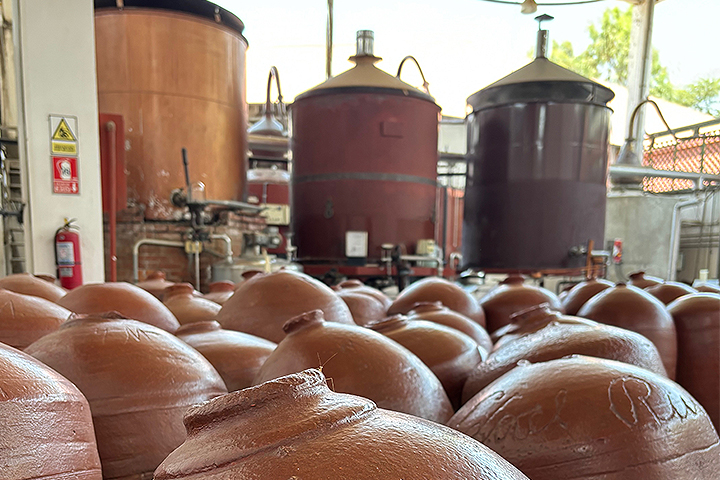
Clay jars were used In old days to store Wine
At Tacama I had the opportunity to taste their different variants of Pisco. Their Mulita Pisco is made from young grapes which feels hard and raw. This Pisco is not something to enjoy by itself, more suitable for Peruvian drinks such as Pisco Sour and El Capitán.
Tasting Tacama Pisco Gran Demonio Italia is a completely difference experience. This Pisco is made using old mature grapevines and is something that is easy to enjoy. Something that can replace your usual Cognac or Grappa.

A glass of Tacama Pisco Gran Demonio Italia
A Touch Of Old History
Many buildings at the winery have changed since 1540 but you still get a good understanding of how it must have been to produce something back at those times. Tacama winery lies on the border of the Atacama Desert and has one of the driest climates in the world, with only around 1 cm of rainfall for the whole year. Luckily, they also get water from the Anders but still I cannot wonder what challenge it must have been for the first winemakers to grow something here.
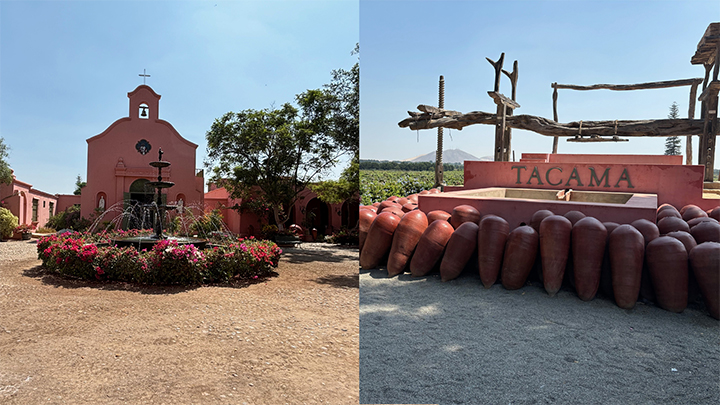
The old Tacama Convent and the 100-year old wine press
Kjeldahl Analysis
What I found out is that this exploration of Pisco, in the remote desert of Peru, is also linked to what we do here at OPSIS LiquidLINE. Our development of analytical instruments for food and beverage analysis can also be used by a Pisco producer.
The alcohol level for a Pisco is required to be between 38% and 48% abv. This can be measured using our KjelROC distillation unit in combination with a densitometer.
Volatile Acid is a natural result from the fermentation process, but unfortunately it provides an unpleasant odor and taste. This is why there is a maximum allowed Volatile Acidity in Pisco. The Volatile Acid levels can be measured with a KjelROC Distillation unit or KjelROC Analyzer.

The KjelROC Distillation Unit
So, going for a Distillery tour in Peru made me realize yet another application for our products. Maybe worthwhile to go for more tours in the future…
Learn more about OPSIS LiquidLINEs monitoring solutions for producers of wine >>
Read our blog post 'Things that can effect the wina quality' >>